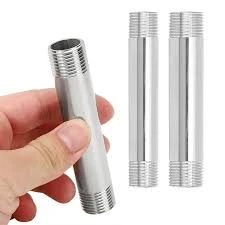-
Cangzhou Yulong Steel Co., Ltd.
-
Phone:
+86 13303177267 -
Email:
admin@ylsteelfittings.com
- English
- Arabic
- Italian
- Spanish
- Portuguese
- German
- kazakh
- Persian
- Greek
- French
- Russian
- Polish
- Thai
- Indonesian
- Vietnamese
- Zulu
- Korean
- Uzbek
- Hindi
- Serbian
- Malay
- Ukrainian
- Gujarati
- Haitian Creole
- hausa
- hawaiian
- Hebrew
- Miao
- Hungarian
- Icelandic
- igbo
- irish
- Japanese
- Javanese
- Kannada
- Khmer
- Rwandese
- Afrikaans
- Albanian
- Amharic
- Armenian
- Azerbaijani
- Basque
- Belarusian
- Bengali
- Bosnian
- Bulgarian
- Catalan
- Cebuano
- China
- China (Taiwan)
- Corsican
- Croatian
- Czech
- Danish
- Esperanto
- Estonian
- Finnish
- Frisian
- Galician
- Georgian
- Kurdish
- Kyrgyz
- Lao
- Latin
- Latvian
- Lithuanian
- Luxembourgish
- Macedonian
- Malgashi
- Malayalam
- Maltese
- Maori
- Marathi
- Mongolian
- Myanmar
- Nepali
- Norwegian
- Norwegian
- Occitan
- Pashto
- Dutch
- Punjabi
- Romanian
- Samoan
- Scottish Gaelic
- Sesotho
- Shona
- Sindhi
- Sinhala
- Slovak
- Slovenian
- Somali
- Sundanese
- Swahili
- Swedish
- Tagalog
- Tajik
- Tamil
- Tatar
- Telugu
- Turkish
- Turkmen
- Urdu
- Uighur
- Welsh
- Bantu
- Yiddish
- Yoruba

Oct . 08, 2024 00:16 Back to list
stainless steel tube weld fittings
Stainless Steel Tube Weld Fittings An Overview
Stainless steel tube weld fittings are essential components in various industries, providing robust solutions for joining and transitioning between pipes and tubes. These fittings are primarily utilized in sectors that demand high corrosion resistance and strength, making them ideal for applications in chemical processing, food and beverage, pharmaceuticals, and oil and gas.
One of the key advantages of stainless steel tube weld fittings is their exceptional resistance to corrosion. Stainless steel, primarily composed of iron, carbon, and at least 10.5% chromium, forms a passive layer of chromium oxide on its surface. This layer provides a formidable defense against environmental factors, such as moisture and oxidation, which can lead to rust in other materials. Consequently, stainless steel weld fittings are preferred in environments that involve exposure to harsh chemicals or high humidity.
Another critical feature of stainless steel tube weld fittings is their ability to withstand high temperatures and pressures. This characteristic is crucial in industries where processes can be extreme, such as in chemical reactors or high-pressure steam pipelines. The durability of stainless steel ensures that the fittings maintain their integrity and performance over time, reducing the likelihood of leaks and failures that could lead to costly downtime.
stainless steel tube weld fittings

In addition to their strength and resistance properties, stainless steel tube weld fittings offer versatility in design and sizes. They come in a variety of shapes, including elbows, tees, reducers, and caps, allowing for numerous configurations to meet specific piping requirements. This versatility makes it easier for engineers to design complex systems that are both efficient and effective in transporting fluids or gases.
Furthermore, the welding process involved in joining these fittings creates a seamless connection that enhances the flow characteristics of the system. This seamless nature minimizes turbulence and pressure drops, leading to improved overall system performance. Additionally, welded joints provide a smoother, more reliable interface compared to threaded or flange connections, which can be prone to leaks.
The installation of stainless steel weld fittings typically requires skilled personnel and specialized equipment, as proper welding techniques are critical to ensuring structural integrity. However, the long-term benefits far outweigh initial challenges, making them a worthwhile investment for any facility aiming for efficiency and reliability.
In summary, stainless steel tube weld fittings play a vital role in numerous industrial applications, offering unmatched corrosion resistance, temperature resilience, and versatility. Their ability to maintain performance under demanding conditions makes them an invaluable asset in the design and operation of piping systems, ensuring safety and durability for years to come.
Latest news
-
ANSI 150P SS304 SO FLANGE
NewsFeb.14,2025
-
ASTM A333GR6 STEEL PIPE
NewsJan.20,2025
-
ANSI B16.5 WELDING NECK FLANGE
NewsJan.15,2026
-
ANSI B16.5 SLIP-ON FLANGE
NewsApr.19,2024
-
SABS 1123 FLANGE
NewsJan.15,2025
-
DIN86044 PLATE FLANGE
NewsApr.19,2024
-
DIN2527 BLIND FLANGE
NewsApr.12,2024
-
JIS B2311 Butt-Welding Fittings LR/SR 45°/90° /180°Seamless/Weld
NewsApr.23,2024











